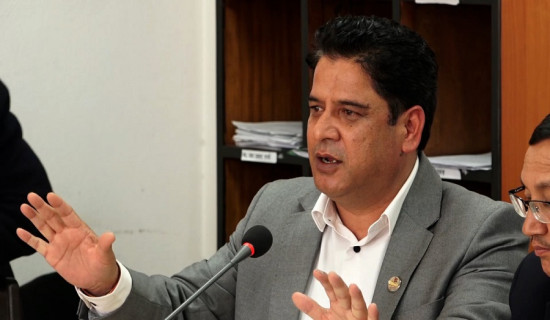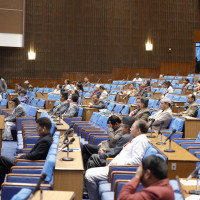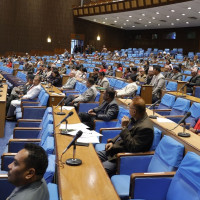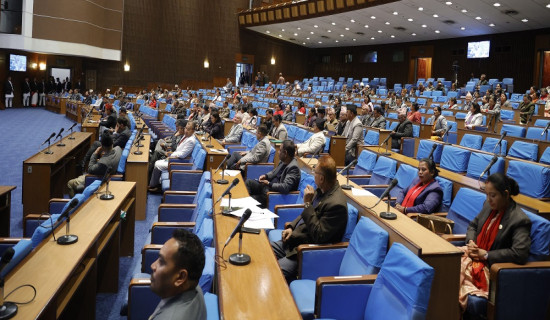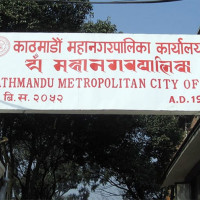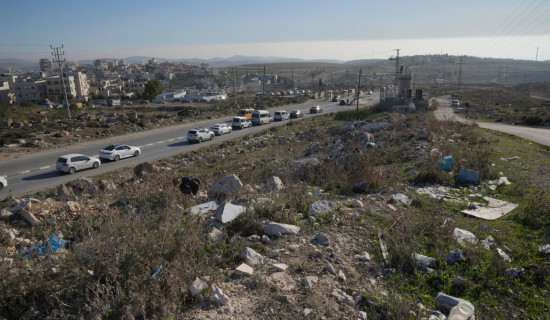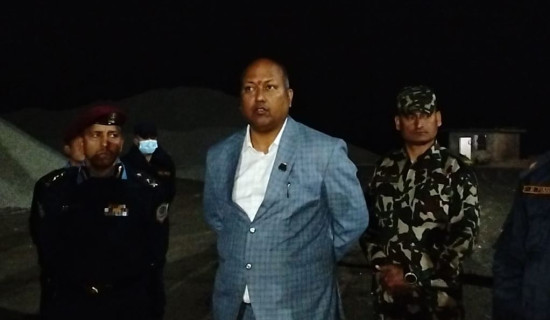- Tuesday, 11 February 2025
Nation experiences increase in heat
By A Staff Reporter,Kathmandu, Apr. 19: As the third week of April progresses, many parts of the country, mostly Terai districts, have experienced sudden increase of temperatures.
Temperatures in Terai and various other districts already recording above-normal due to long droughts throughout the country, said Raju Pradhananga, a senior meteorologist at the Meteorological Forecasting Division under the Department of Hydrology and Meteorology (DHM).
Districts including Rupandehi, Parsa, Bara, Sarlahi, Dhanshu, Saptari and Siraha already recorded above 40 degrees Celsius. Other Terai districts have also recorded above 38 degrees Celsius, according to DHM. On Tuesday, Bhairahawa recorded a maximum temperature of 41.7 degrees Celsius, Nepalgunj recorded 40.5 degrees Celsius, Janakpur recorded 40.4 degrees Celsius and Simara 39.9 degrees Celsius.
According to Dr. Indira Kandel, a senior divisional meteorologist at the Climate Change Division, for the past four to five days, the temperature in the central and eastern Terai region has shown mild to moderate loo (a strong, dusty, hot and dry summer wind from the west which blows over the Indo-Gangetic Plain region of North India) whereas in some places the temperature indicates a warning or extreme loo occurrences.
According to Dr. Pradip Gyanwali, Member-Secretary (Executive Chief) at the Nepal Health Research Council (NHRC), the loo is not only in the Terai but also in other parts of the country. It affects the environment and human health. “The dry hot air makes people dehydrate and affect the lungs which lead to heat stroke. If not taken care of on time, that leads to people’s death,” he said.
He suggested people drink a lot of water and any form of liquid to avoid extreme heat.
As the possibility of rainfall is low in most parts of Terai and hilly areas – there is the possibility of a rising maximum temperature range to extreme levels, said a special bulletin about hot days and heat waves by DHM on Tuesday.
According to the bulletin, with the decrease in the amount of rain throughout the country, the number of wildfires has increased, and many parts of the country including the Kathmandu Valley are experiencing hazy weather.
Dr. Binod Pokharel, Associate Professor at the Central Department of Hydrology and Meteorology at Tribhuvan University, said that the current heat wave is associated
with the high pressure that is over North India.
Precipitation will be light to moderate over the mid-hills and
high mountains, but no rain is forecast for Tarai.
"I hope this system may help to reduce very unhealthy air pollution too," he added.
“Last year the high temperature was a record in March in Bhairahawa and some other parts of the country but this time the country already has many record-breaking temperatures including Bhairahawa and other Terai cities,”
Dr. Pokharel said.
He also said that air pollution is at unhealthy to hazardous levels in most of the cities and towns of the country mainly due to increasing forest fires.
However, the Western Disturbance is bringing some precipitation and slightly cooler air from tonight that will help for the heat wave.
Pradhananga said the country has the influence of a high-pressure system which leads to heat waves in various parts of the country but the low-pressure system will enter the country on Wednesday evening from the western part of the country and spread to the eastern side. The low-pressure system will help to reduce the temperature at some point, he added.



